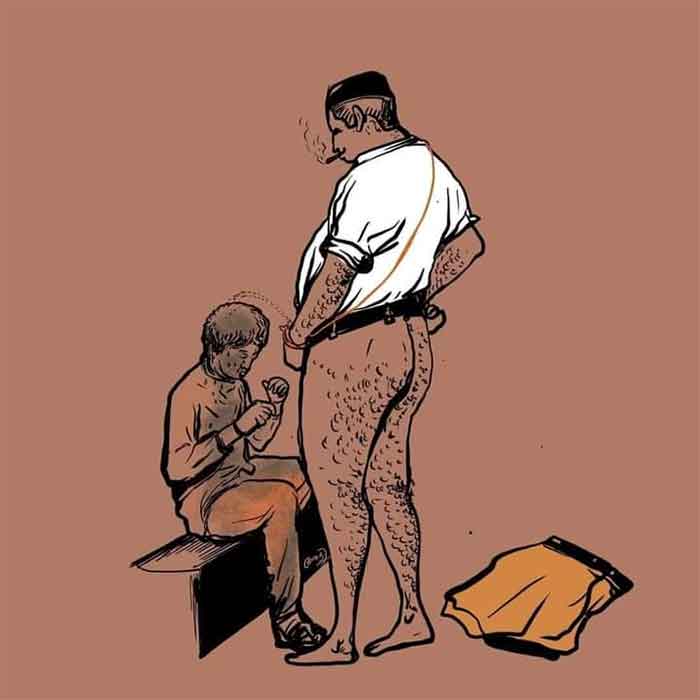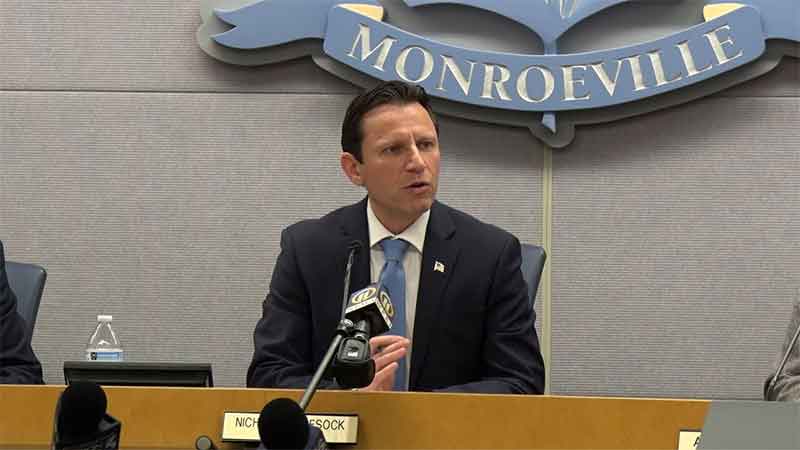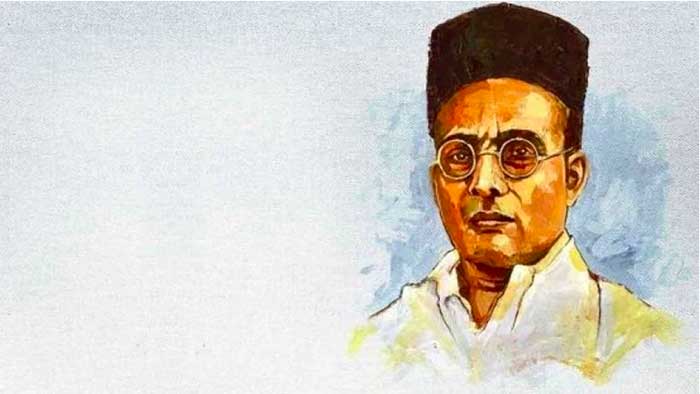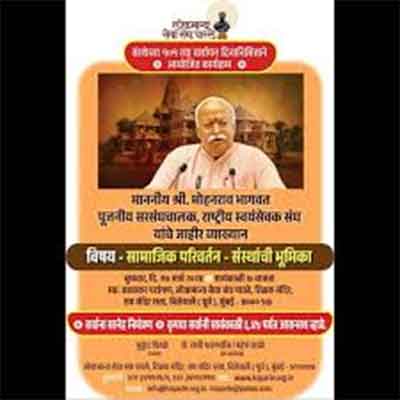
Last week, video emerged showing what was — at least, what one hopes was — the tail end of a wild night experienced by a seasoned political activist in India’s central state of Madhya Pradesh.
Who knows exactly what Pravesh Shukla spent his time doing earlier that day. Perhaps, as a party worker for the BJP, he’d been out in the humid MP streets, touting the accomplishments of the Hindu nationalist regime that rules both nationally and in his state. There’s some confusion as to which year the video was filmed — some claim it was this year, some claim it was in 2020. Either way, MP’s last state elections were in November 2020 and its next are in November 2023, so, whenever the video was filmed, Mr. Shukla was quite possibly exhausted from a long day of campaigning.
Like many young politicos, Mr. Shukla apparently chose to blow off steam by taking a night out on the town. Having, presumably, recently left his last watering spot, he, like any lush lost in the streets late at night, looked around for a place to find some relief. Despite the massive Swacch Bharat (Clean India) campaign launched by BJP Prime Minister Narendra Modi, who sought to install toilets all across the country, the desperate Mr. Shukla, it seems, could not find one.
So, in a pinch, he made a rather bad choice.
Stumbling across a tribal man sitting on a street corner, Mr. Shukla did the unthinkable. Unzipping, he urinated on the man’s head while a friend made the additionally rather bad choice to film the act. Although a charitable perspective might suggest that Mr. Shukla, in his inebriated condition, confused the tribal man for a toilet, some less charitable perspectives would consider the BJP worker to have — in an act of deliberate dehumanization — conflated the tribal man with a toilet.
Although we may never know the truth about Mr. Shukla’s thought process in that moment, we do at least know two things for certain.
First, as Prime Minister Modi assured the world two weeks ago in the first press conference of his nine-year tenure, “there is absolutely no question of discrimination” in India regardless of “caste, creed, religion, gender, [or indigenous status]” — I may have added that last one — because “democracy runs deep in India’s veins.” Second, this atrocious behavior by Mr. Shukla was obviously an extreme departure from the norm in Modi’s “New India.”
In short, this act was nothing short of an aberration.
Admittedly, there have been a few other “aberrations” in recent days. Some of them have resulted in outcomes which are, to be fair, a tad more violent. And, as in the case of the tribal man upon whose face the BJP worker relieved himself, the victims in these other incidents do often hail from historically marginalized or religious minority communities.
This is, of course, total coincidence. I must emphasize, after all, that a mere handful of deviant occurrences in no way whatsoever dampens the reality that, under BJP rule, “acche din aane waale hain” — that is, good days are coming.
Of course, these good days, one must admit, will never come — as of this year — for at least a few individuals from, for instance, the Dalit community.
Keeping in mind that, since Modi himself reminded us that there is “no question of discrimination” in India on the basis of caste, I would be remiss, at the outset, not to clarify that the following incidents clearly have no more to do with caste discrimination than did the treatment of that tribal man by Mr. Shukla, who hails from the top Brahmin caste.
“Aberrations” Against Dalits
Last month, in a rare aberrant incident in Uttar Pradesh, the president of a Dalit rights organization, Chandra Shekhar Azad, was shot in an assassination attempt. Elsewhere, in Gujarat, after a Dalit boy touched a cricket ball being used by a group of upper-caste men, they beat his uncle unconscious and cut off his left thumb. Meanwhile, in Maharashtra, a group of men attacked two Dalit youth at a grocery store, accused them of celebrating the birthday of Dalit civil rights champion Dr. B.R. Ambedkar, and murdered one of them.
In May, in Karnataka, another aberration occurred when two young Dalit men, accused of drinking water from the same jug as some upper-caste men, were attacked and murdered. In March, also in the same state, some Dalit kids, excited by the local village fair, started dancing in the parade, so later that night, their homes were set on fire.
In February, in Uttar Pradesh, a Dalit girl was abducted, gang-raped, and murdered. Also that month, in Karnataka, a Dalit woman’s cow strayed into her neighbor’s field, so he beat her up. In Punjab, a Dalit man’s goat strayed into his neighbors’ fields, so they murdered him.
In January, in Uttar Pradesh, a group of upper-caste men didn’t like the amount of road-space that a Dalit man on a bicycle gave them, so they beat him up; in a separate incident, a Dalit boy on a bike accidentally ran into a man on the road, so he was mobbed and murdered. In the same state, a mob led by a BJP worker attacked a Dalit community to beat up its residents. And, still in UP, a group of upper-caste men snatched a 10-year-old Dalit boy, murdered him, and hung him from a tree. Elsewhere, in Telangana, a Dalit organization which was planning to install a statue of Dr. Ambedkar was attacked and, when one of the Dalit men went to the local police station to complain, he was surrounded and beaten up by a group linked to the VHP (which is the religious wing of the RSS, which is the parent organization of the BJP).
Now, the uncharitable observer might consider these incidents to be, well, a little too common to qualify as aberrations. Yet, we do trust to Modi’s comforting assurance that there is no discrimination on the basis of caste in India.
“Aberrations” Against Muslims
In that same vein, as the prime minister has so confidently asserted, there is also no discrimination, within his regime, on the basis of religion. Granted, one or two or three or four or five or more other incidents have occurred in which, coincidentally, the victims do all happen to be Indian Muslims. Yet, as we review some of these recent incidents, the key point to keep in mind is that, in Modi’s “New India,” all of these occurrences must be understood as nothing more than the rarest of rare exceptions from the norm.
One of the most recent of those rare exceptions from the norm occurred in June, in Madhya Pradesh, where, as two Muslim men were carrying meat, members of the Bajrang Dal (the youth wing of the VHP), assuming that the meat must be beef, stopped them and beat them up. Elsewhere, in Maharashtra, a young Muslim man was transporting some cows, so Bajrang Dal members murdered him. In Bihar, a Muslim man was transporting animal bones, so he too was murdered. In Odisha, two Muslim men were transporting goat carcasses, so they were surrounded by a mob who tied them up and beat them up on camera. In Rajasthan, a mob — which just happened to include a local BJP leader — set a mosque on fire. In Gujarat, a group of Muslim men who were protesting the planned demolition of a local Islamic shrine were seized by a mob and publicly flogged.
In May, in Rajasthan, a bus carrying Muslim Hajj pilgrims to the airport was stopped by a mob, which boarded and began attacking the passengers, sending several of them to the hospital. In Telangana, when a mob dragged a Muslim man out of his house to beat him up, his pregnant sister tried shielding her brother from the blows and ended up losing her baby as a result. In Karnataka, a Muslim college student was found drinking juice with a Hindu woman classmate, so he was beaten up by a group of Bajrang Dal members. In Madhya Pradesh, another Muslim college student was also found sitting in a cafe with a Hindu girl, so he too was beaten up.
In April, in Uttar Pradesh, a Muslim man who was a former Member of Parliament was — along with his brother — assassinated on live TV while in police custody. In Haryana, an armed mob of RSS and VHP members invaded a mosque during evening prayers to beat and stab the congregants. In Jharkhand, a Muslim boy was accused of theft, so he was tied to a pole and murdered.
In March, in Bihar, a mob firebombed a century-old madrassa, burning it down. Also in Bihar, a Muslim man was accused of possessing beef, so he was murdered. In Maharashtra, masked assailants invaded a mosque, seized the imam, and then beat him up and shaved his beard because he refused to chant a Hindu slogan. In Uttar Pradesh, a Muslim merchant was chased through the streets and repeatedly beaten while, elsewhere in the state, Bajrang Dal members, accusing another Muslim man of possessing beef, beat him up too. In Madhya Pradesh, after spotting a Muslim boy sitting in a park with a Hindu girl, a group of Bajrang Dal members beat him up.
In February, a Muslim man in Bihar was set upon by a mob and murdered. In Haryana, two Muslim men were abducted by a group of Bajrang Dal members, set on fire, and, yes, murdered. In Uttar Pradesh, members of VHP and Bajrang Dal vandalized an under-construction mosque. In Madhya Pradesh, a group of men ambushed an imam who was on the way to his mosque and stabbed him.
Now, some people might examine all of these incidents and conclude that there’s a two-fold unifying factor involved in many, if not most, of them: the perpetrators are linked to the family of Hindu nationalist groups that includes the BJP, RSS, VHP, and Bajrang Dal while the victims all belong to a minority community.
Yet, for those tempted to employ logic to attempt to explain the cause of all of this violence, just remember: correlation is not causation. Wouldn’t it be jumping to conclusions, after all, to blame these aberrations on Hindu nationalists?
Indeed, can these, though tragic, truly be considered as anything but completely random acts of violence? Isn’t it pure coincidence that this long series of aberrant attacks on Dalits and Muslims just happens to also coincide with a string of assaults against Indian Christians? Isn’t it also merely just some strange twist of fate that the perpetrators of a great many of these attacks on Christians also just happen to be affiliated with the same family of Hindu nationalist groups whose members are sometimes also found doing things like murdering Muslims and Dalits or pissing in the faces of tribals?
“Aberrations” Against Christians
Occurring as they do in Modi’s “New India,” where, as we know, there is no question of any discrimination, the following recent attacks on Christians are, assuredly, merely aberrations
In June, for instance, in Haryana, an armed mob visited a church just after services and issued the priest a deadline to shut the church down. At another church nearby, hundreds of members of VHP and Bajrang Dal turned out to warn the congregation that they’re not welcome in town.
In May, in Madhya Pradesh, when Christians gathered for private prayer in a congregant’s home, police showed up and arrested 10 of them, charging them with the “crime” of engaging in “religious conversion activity.” In the same state, another pastor was arrested for “luring” converts. Manipur, violence, which is still ongoing, broke out against tribal Christians; since it began, anywhere from 100 to 300 plus Christians have been murdered by mobs, while hundreds of churches have been burned to the ground.
In April, in Uttar Pradesh, a pastor and his wife were arrested immediately after Sunday worship and jailed on charges of “forced conversion.” The issue of “free will,” however, didn’t appear to come under examination in Chhattisgarh when a local BJP leader oversaw the mass “reconversion” of 250 Christians “back to” Hinduism.
In March, in Uttar Pradesh, members of the Bajrang Dal invaded a Christian home, accused the residents of engaging in conversion activities, and, when police got involved, they arrested three of the congregants. In the same state, a 100-year-old Christian hospital was shuttered after repeated invasions of prayer services by mobs, raids by police, and arrest of staff, all conducted on allegations of “conversion.” Still in UP, a pastor who was arrested last year after VHP members accused him of “forcible conversion” had his jail time extended, at the last minute, due to new charges by the Hindu nationalist group. Once again in UP, members of the VHP and Bajrang Dal interrupted a Saturday morning prayer service, seized Christian congregants, and handed them over to the police, who jailed them. In Delhi, at a book fair, a mob attacked a Christian stand, seized much of their literature, and tore it up.
In February, also in Uttar Pradesh, an armed mob invaded a church service, beat up the pastor and his congregation, and vandalized the building. Once more in UP, the Bajrang Dal accused a pastor and his wife of engaging in the conversion “racket,” prompting their arrest. In Gujarat, VHP and Bajrang Dal members occupied a Christian school campus for a whole day, demanding the school install pictures of Hindu deities. In Madhya Pradesh, vandals broke into a church to set it on fire from the inside.
In January, in Bihar, a Christian couple were walking home when a mob ambushed them, beat up the husband, and threatened to “ruin” them for not being Hindu. In Chhattisgarh, that same local BJP leader oversaw the “reconversion” (whether by force or not, no one bothered to ask) of 1,100 Christians “back to” Hinduism. In Madhya Pradesh, a Catholic priest on his way to conduct Mass was arrested and charged with “fraudulent” conversions. In Maharashtra, 14 Christians — including a 17-year-old boy — were arrested on charges of, once again, engaging in conversion. In Chhattisgarh, an armed mob that included two local BJP leaders invaded a church and smashed its premises. In Maharashtra, grave-markers at a Christian cemetery were pulverized.
Meanwhile, that violence in Manipur continues unabated. Between the death count, the numbers of homes and religious sites torched, and the amount of people displaced, the ethnic cleansing in Manipur is undeniably the absolute worst instance of violence to occur since Modi came to power. At this point, in terms of severity, it has quite possibly surpassed the 2008 Kandhamal Pogrom against Christians in India. It is, in short, the worst violence to touch — and be tolerated by — the Republic of India since Modi oversaw the mass slaughter of 2,000 Muslim men, women, and children in the 2002 Gujarat Pogrom.
A Pattern of Aberrations
But there I go, starting to sound like I’m making assumptions about the existence of some kind of pattern. These incidents are aberrations. Nothing more.
After all, as Modi insisted when questioned at the White House last month about human rights violations against Indian minorities, there is “absolutely no question of discrimination.” It was, then, just pure chance that a few tens of thousands of Modi’s online advocates immediately seized on the fact that the reporter who dared to question their Dear Leader was none other than a Muslim woman named Sabrina Siddiqui. Sheer happenstance, of course, is the reason that, weeks after the fact, Siddiqui continues to receive a barrage of rape and death threats.
By that metric, it must have just been similar bad luck that, after former President Barack Obama warned about the need for India to protect the human rights of its Muslim citizens, the BJP Chief Minister of Assam shot back by comparing Obama to those Muslims in India, saying that “taking care of” Indian Muslims should be their priority before considering “going to Washington.” Of course, a charitable perspective might be that the Chief Minister’s ominous remark was misinterpreted and that when he talked about “taking care of” Indian Muslims, he meant clothing, feeding, educating, and employing them.
On the other hand, shifting focus back to Modi, a less charitable interpretation of his remarks might be that when he said that there is “absolutely no question of discrimination,” he meant that there is absolutely no question that discrimination is the name of the BJP’s game. Perhaps also, when Modi spoke about how “democracy runs deep in India’s veins,” the part that he just forgot to mention is that his regime has slashed open those veins to bleed out the nation’s democracy so that he can transfuse it with the poison of supremacy.
The truth is that, when Mr. Shukla did what he did to that poor tribal man, he was simply exposing, for all the world to see, the tragic reality of the predominant spirit of supremacy conjured up by Modi’s regime.
After all, when we examine this long series of atrocities which have occurred — and continue to occur — under Modi’s iron-fisted rule of India, it begins to emerge as a pattern of aberrations. If aberrations occur in a pattern, they are no longer exceptions to the norm. Rather, in Modi’s “New India,” abhorrent aberrations are now the “New Normal.”
Pieter Friedrich is a freelance journalist specializing in analysis of South Asian affairs. He is the author of Sikh Caucus: Siege in Delhi, Surrender in Washington and Saffron Fascists: India’s Hindu Nationalist Rulers as well as co-author of Captivating the Simple-Hearted: A Struggle for Human Dignity in the Indian Subcontinent. Discover more by him at PieterFriedrich.net.















































